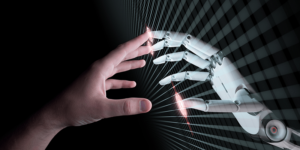Google Photos, the tech giant’s impressive and convenient photo service, has always been renowned for its superior facial recognition features that allow it to group photos. Recently, however, it appears to have quietly introduced a surprising new capability. The ability to recognize people even from the back, without their faces being clearly visible.
Previously, users would have had to manually tag such photos, as Google Photos could not detect a face, and therefore could not automatically identify the subject. Now, the app is able to detect the back of a person’s head, and even more startlingly, correctly tag the person in the photo. This applies not only to new photos but also to those uploaded years ago, highlighting the retrospective application of this feature.
How is this new feature possible ? It appears to be a combination of context and potentially other machine learning techniques. Google Photos seems to recognize the back of a person’s head by cross-referencing other photos from the same timeframe. If someone is wearing the same clothes and is in the same location, the app makes the logical deduction that it must be the same person. There’s also a possibility that Google Photos has created a model of the person’s head based on videos and other partial-face photos, thus recognizing unique features such as head shape and hair.
However, this new feature does not work flawlessly. It’s estimated to accurately recognize the back of a person’s head in about 80-85% of photos. There are still some outliers, where Google Photos fails to acknowledge the presence of a person from certain angles, and users cannot even manually add a tag in such cases.
In photos where the app does identify a person from the back, the tag appears slightly differently than in regular facially-recognized photos. It shows a notice of “face available to add”, signaling that while Google has done its part, the recognition may not be 100% correct. Users have the option to change the person tagged if it’s wrong or remove the tag altogether.
Despite these limitations, the new feature marks a significant improvement in Google Photos’ facial recognition capabilities, even extending to partial faces and masked faces. It allows more photos of loved ones to be grouped together, regardless of whether their entire face is visible, saving users the hassle of having to manually search for them.
While Google Photos’ ability to recognize users from the back is a powerful and convenient feature, it’s also somewhat puzzling. The addition showcases the continually evolving capabilities of AI and machine learning in improving user experience. However, it also raises new questions and potential concerns about privacy and surveillance in an increasingly digital and interconnected world. Despite these, the consensus appears to be that this is a valuable improvement, bringing added utility to an already versatile app.










